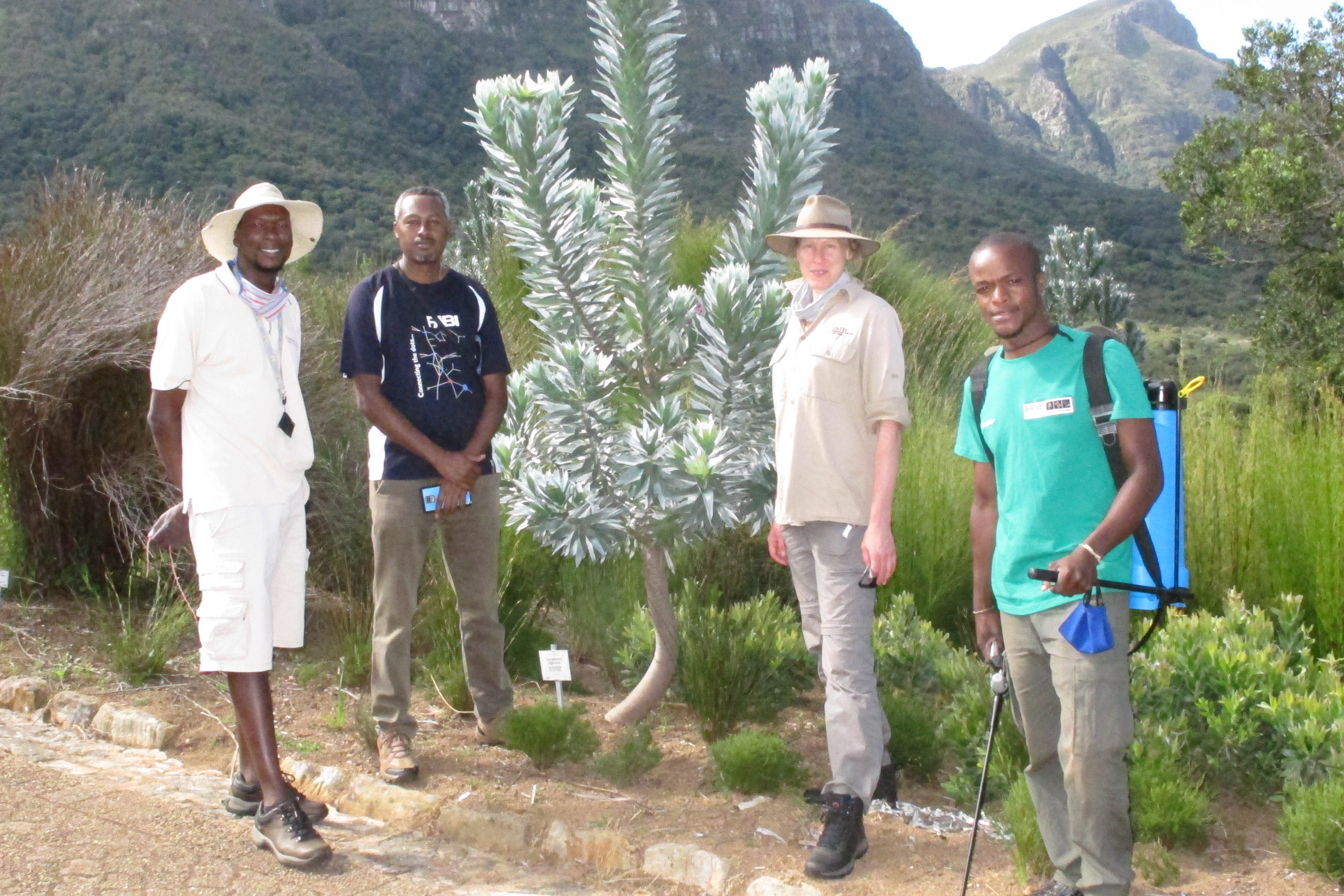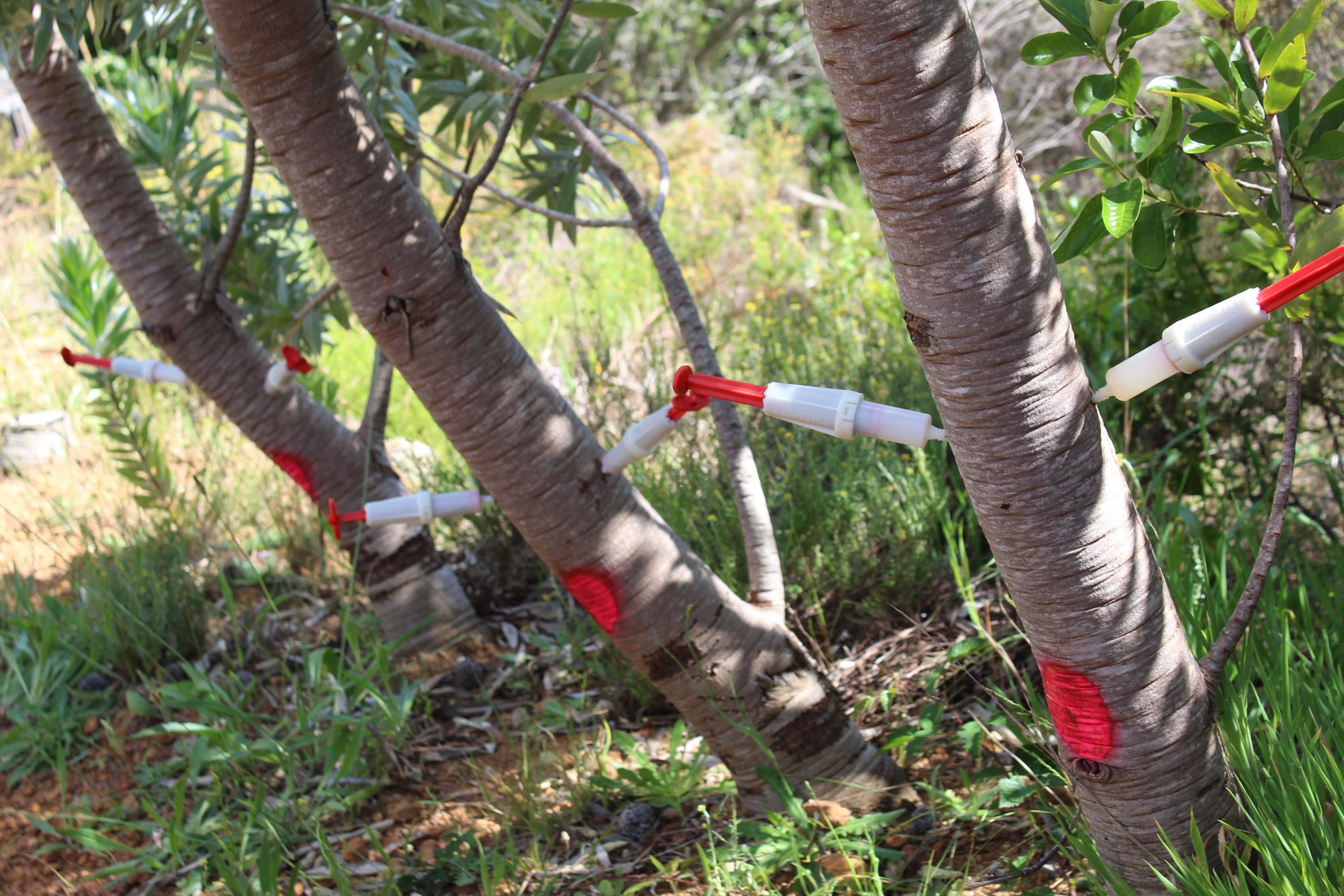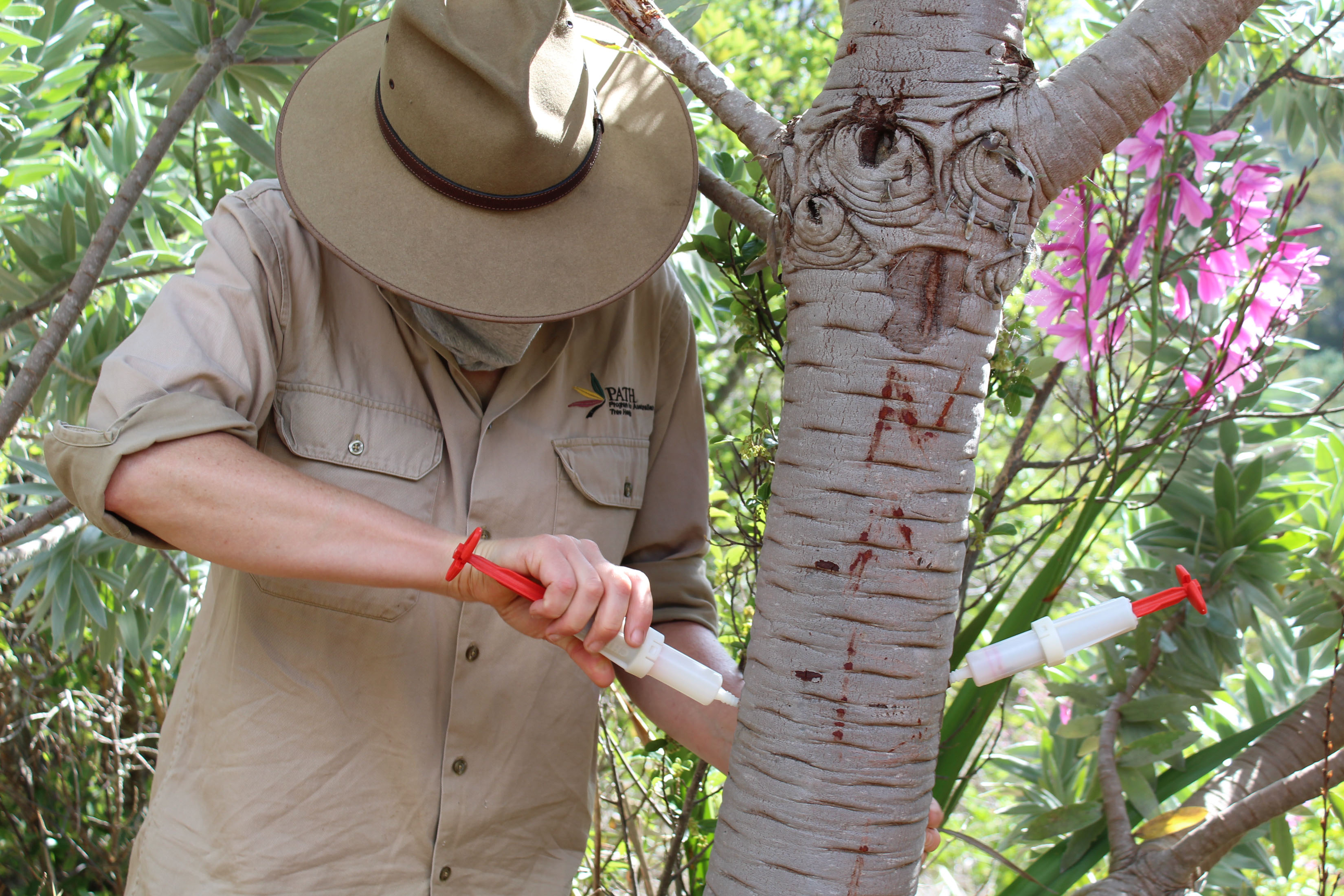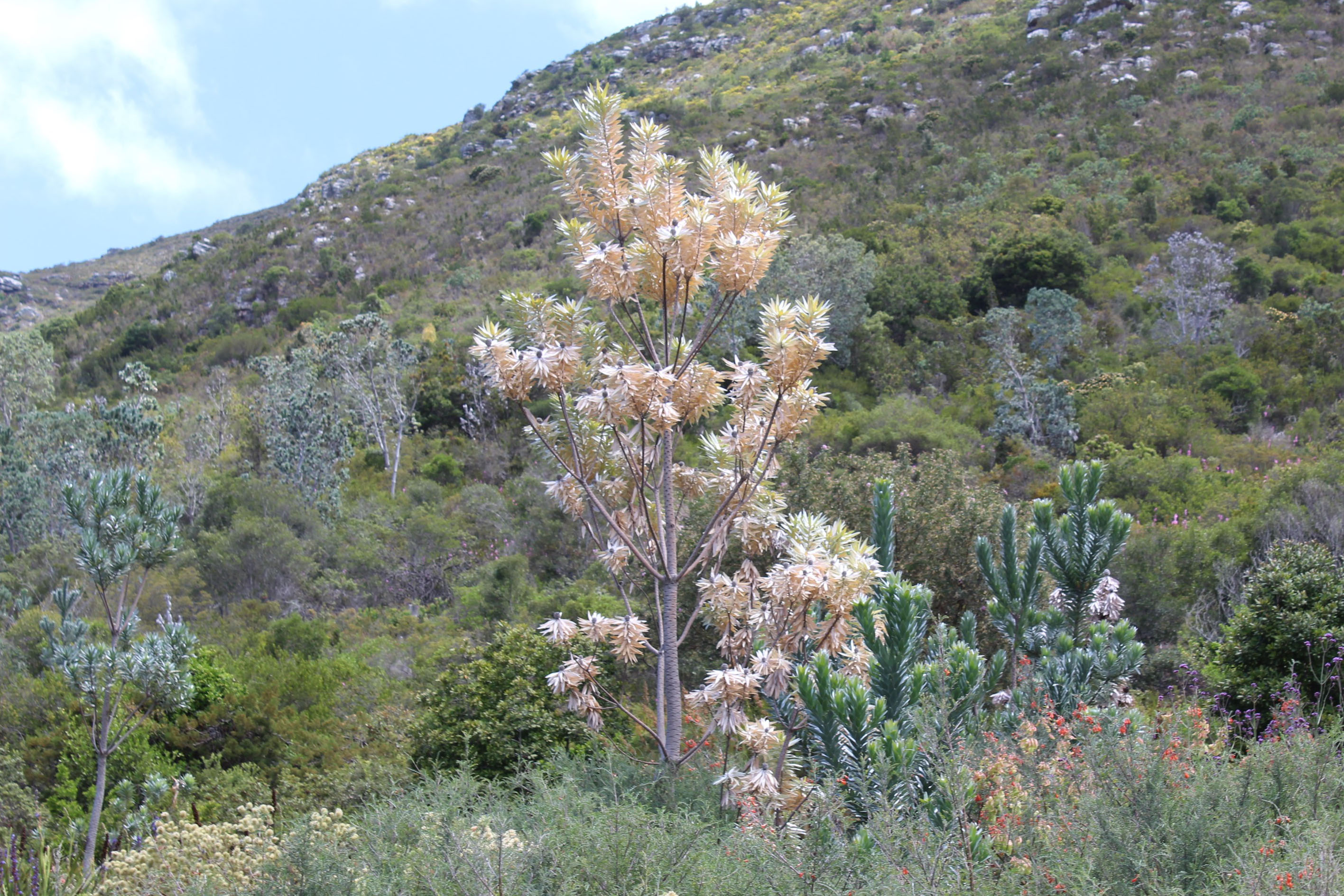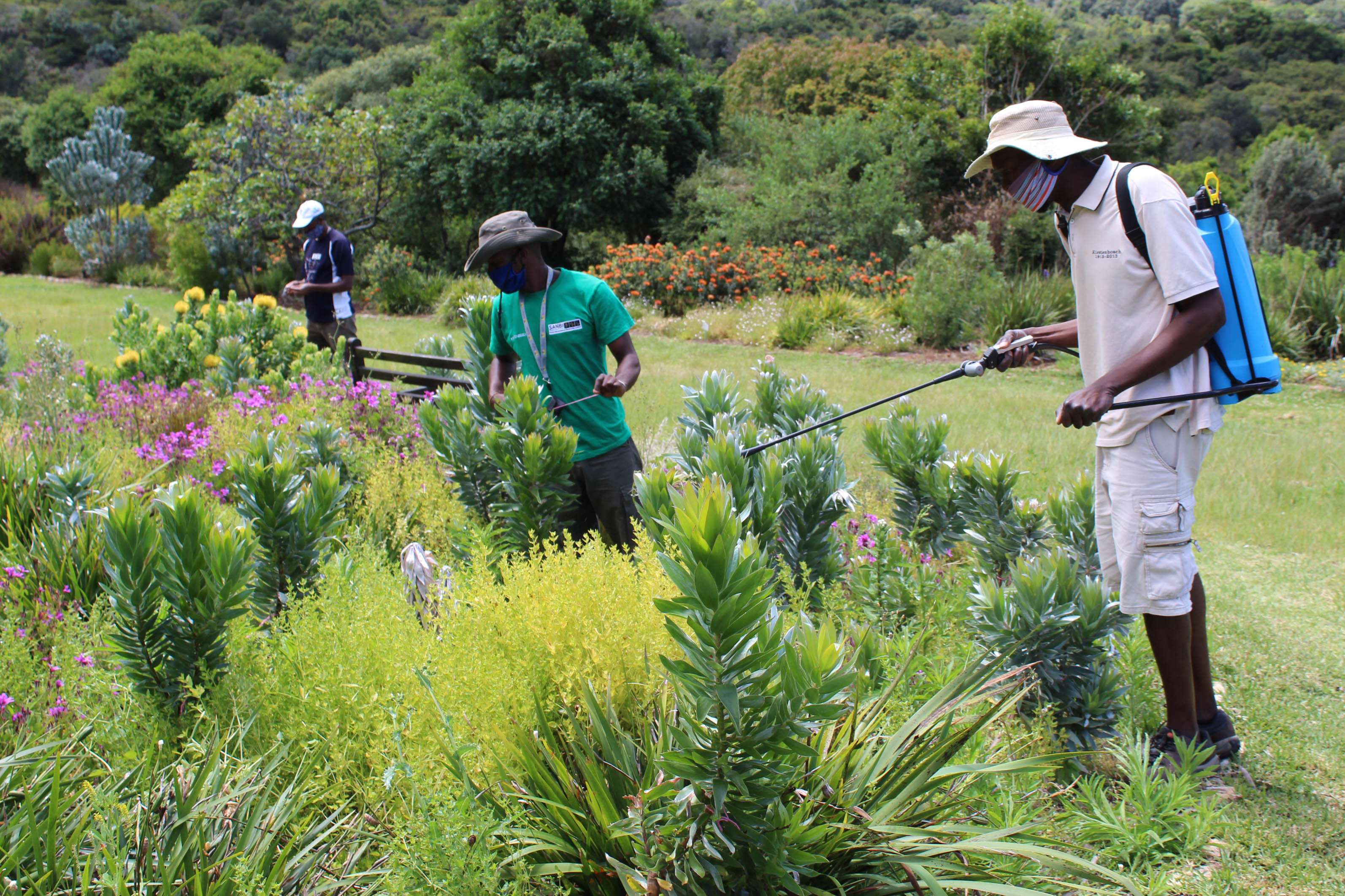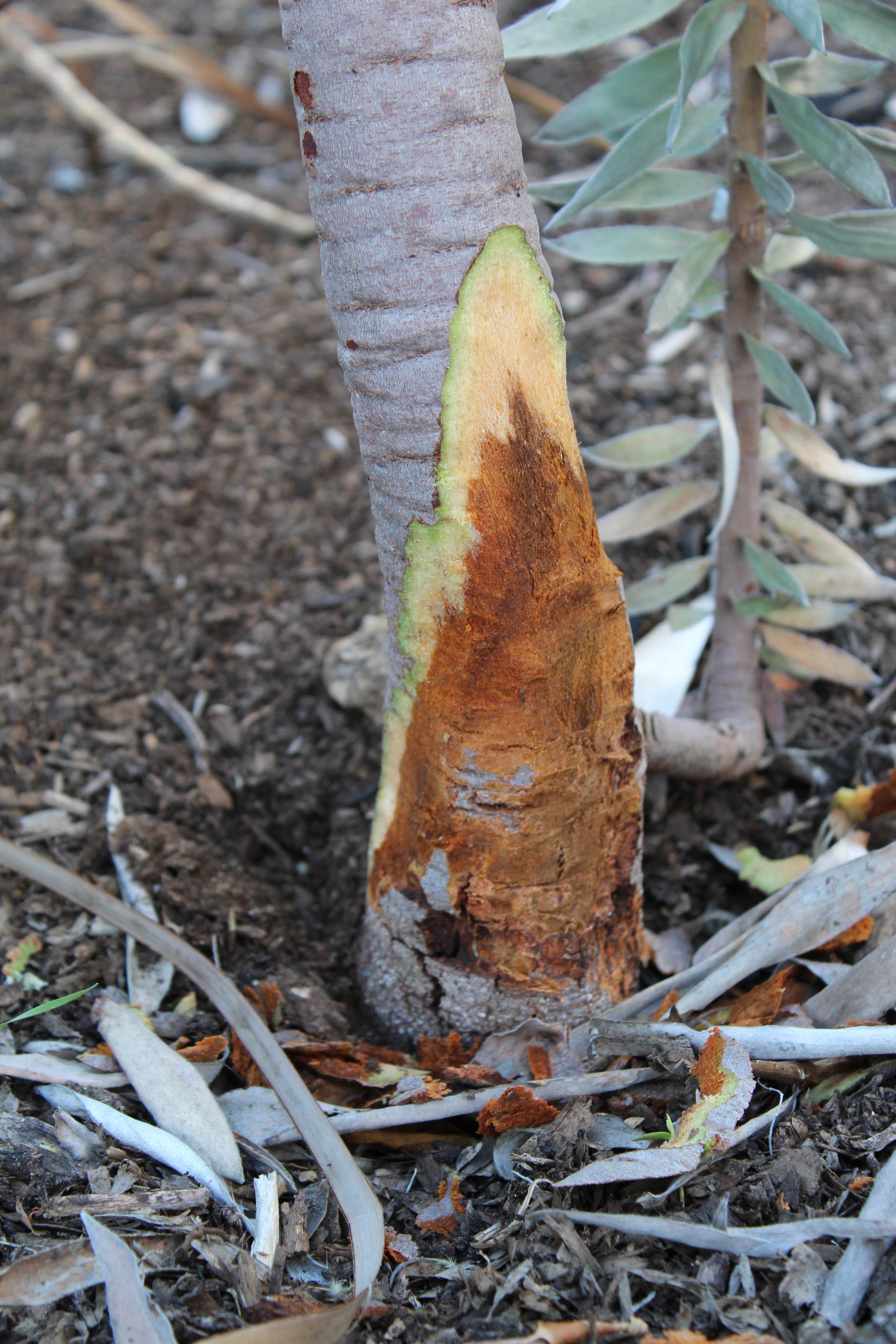Treatment trials established to fight Phytophthora die-back in Kirstenbosch gardens 2020-12-07
South Africa’s iconic silver trees (Leucadendron argenteum) are listed as Endangered (EN) in the Red List of South African Plants. They are threatened by urbanisation and habitat transformation, but they are also susceptible to infection by Phytophthora cinnamomi, a soilborne pathogen that causes root and collar rot. Unfortunately, this devastating introduced pathogen is present in the Kirstenbosch botanical gardens, where it is causing the death of many silver trees.
Phosphite, a biodegradable fungicide, is used in South African agriculture and horticulture settings to guard against Phytophthora root and crown rot of several important commercial crops. However, it has never been applied to indigenous South African flora. Phosphite will not eradicate Phytophthora from the soil, but it can protect plants from infection, and can help them recover if they are already infected.
This spring, phosphite treatment trials were established in Kirstenbosch gardens, as part of a larger FABI Sentinel Plant Project, supported by SANBI. Dr Trudy Paap and Dr Mesfin Gossa, with the help of Kirstenbosch horticulturists, injected 100 silver trees and sprayed 50 seedlings in the garden. Equal numbers of trees and seedlings were marked and left as untreated controls. The survival rates of the treated and non-treated silver trees will be monitored to determine the efficacy of the treatments.
The team is incredibly excited about the first use of this treatment on indigenous South African flora, and are optimistic that the trials will confirm the suitability of phosphite application as a means to protect this iconic tree species.


